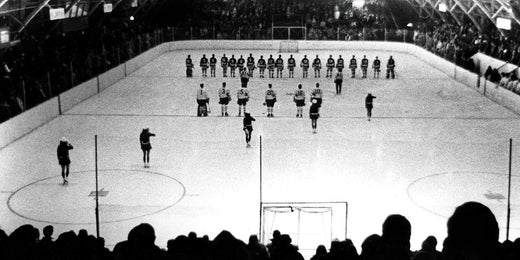
The Sharpening Dude's Hockey 101 | The Game
Share
The Sharpening Dude's Hockey 101 | The Game
The Game
In simple terms, hockey is a high-speed game played on ice with the object being to shoot a small rubber puck into the opposing team’s net, scoring a goal for your team. Yet, for many, it transforms from a mere sport into a lifelong passion.
Hockey has long been deeply ingrained in the culture of Washington, DC. Known for its historical landmarks and vibrant community, it’s no surprise that hockey’s roots in the region trace back to games played in local rinks and community centers, fostering a deep love for the sport.
Over the years, hockey has evolved and grown exponentially. Washington, DC, boasts a passionate hockey community centered around the NHL’s Washington Capitals, who have become a symbol of pride for the area. The Capitals’ success, including their Stanley Cup win in 2018, has inspired countless young players to take up the sport. The region is also home to robust youth and college hockey programs that continue to grow.
Players and Positions
Hockey games are played with six players from each team on the ice at full strength. These include one goaltender, two defensemen, and three forwards. For younger players, such as those in the 6U and 8U age groups, games are often played on cross-ice setups to create a more engaging and developmentally appropriate experience.
The Forwards
-
Center: The center is the player who takes face-offs and is a pivotal position. They are expected to contribute both offensively and defensively, often playing a crucial role in setting up teammates for goals or scoring themselves while also taking on more defensive responsibilities.
-
Left Wing and Right Wing: Flanking the center, these players usually have a more offensive focus, although they still contribute defensively. Despite their titles, wingers are not strictly confined to one side of the ice and frequently move to create scoring opportunities.
Defensemen
-
Positioned behind the forwards, defensemen focus primarily on preventing the opposing team from scoring and assisting in transitioning the puck out of the defensive zone. While their primary role is defensive, they can also contribute offensively but typically do not venture deep into the offensive zone.
Goaltender
-
The goaltender is the last line of defense. Their sole responsibility is to stop the opposing team from scoring. They wear specialized equipment for added protection and to help block shots effectively.
Three Zones of Play
The hockey rink is divided into three distinct zones:
-
Defensive Zone: This is the area between your team’s net and the first blue line. The objective here is to prevent the opposing team from scoring.
-
Neutral Zone: Located between the two blue lines, this area often serves as a transitional space for teams moving between offense and defense.
-
Offensive Zone: This is the area between the second blue line and the opponent’s net, where your team aims to score.
During the second period, teams switch the sides of the ice they are defending. As a result, what was initially a team’s defensive zone becomes their offensive zone and vice versa. For the third period, teams return to their original nets and zones.
Hockey’s fast pace and strategic depth make it one of the most exciting sports to play and watch. From mastering the three zones of play to understanding the unique roles of each position, there’s always something new to learn about this exhilarating game. Whether you’re a player or a fan, hockey has a way of capturing hearts and turning its enthusiasts into lifelong devotees.
